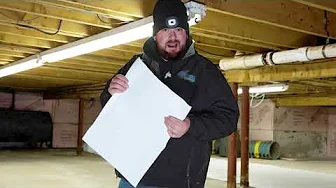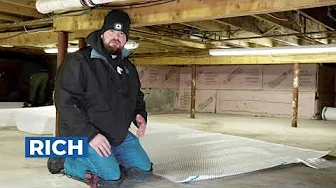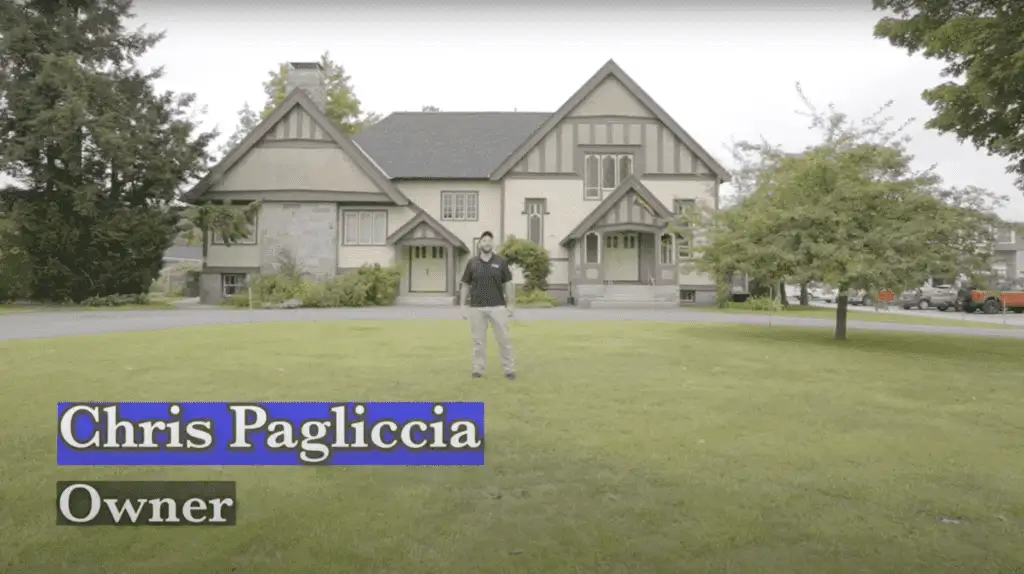Foundation Crack Repair Winchester MA
Cracks in your foundation can be a serious problem. They may lead to structural instability and allow water to seep into your home. Over time, these issues can cause costly damage if left unaddressed. In Winchester, MA, foundation issues are common due to the area’s varying soil conditions and seasonal weather changes. Addressing these cracks early can protect your home’s value, ensure safety, and prevent further complications.
Real People - Real Great Results
Crawl Space Video Playlist
Why Foundation Cracks Happen
Foundation cracks are not random. They’re the result of physical forces acting on your home over time, often stemming from natural processes you can’t see until damage occurs. Here’s why they happen:
- Soil Movement: Soil isn’t static; it shifts, settles, and sometimes outright rebels. In Winchester, expansive soil is a frequent culprit. It soaks up water like a sponge during rainy periods, swelling and pushing against your foundation, and then shrinks back during dry spells, leaving gaps. This constant cycle introduces stress that can lead to cracking.
- Freeze-Thaw Cycles: New England winters don’t cut your foundation any slack. Water in the soil around your home freezes, expands, and puts outward pressure on the foundation. Then it thaws and contracts, with the cycle happening repeatedly throughout the cold months. Over time, this natural process can weaken even the sturdiest materials.
- Poor Drainage: A lot of people think rain just follows gravity and rolls downhill, but poor drainage can derail that idea fast. If water pools around your foundation due to clogged gutters, poorly placed downspouts, or improper grading, the soil can soften and erode. This creates uneven support, making your foundation vulnerable to cracking.
- Aging Materials: Let’s face it—everything ages, even the concrete holding your home together. Older homes in Winchester may have foundations made of materials that degrade naturally over decades. Concrete gets brittle, mortar crumbles, and small cracks from years past quietly grow into bigger ones under the radar.
In short, foundation cracks happen because forces that seem small and manageable—water, soil, temperature changes, time—add up over months and years. Recognizing the why is the first step to stopping the damage from getting worse.
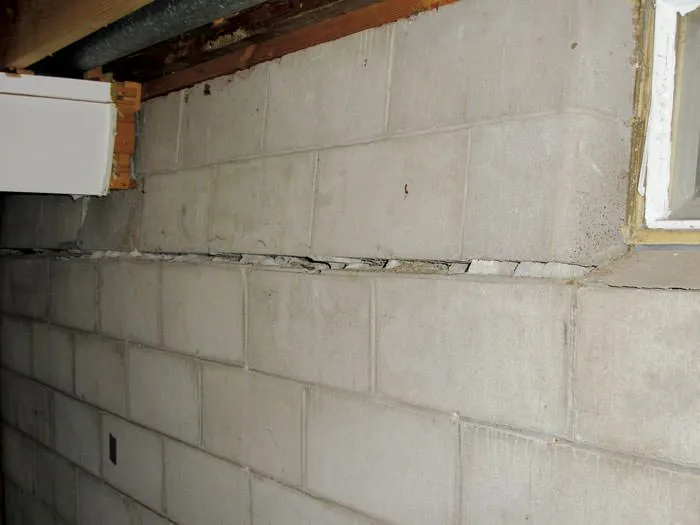
Types of Foundation Cracks
Not all cracks are created equal. Some are harmless blemishes; others are harbingers of structural failure. Knowing the different types of foundation cracks can help you gauge the seriousness of the issue and determine the necessary course of action.
- Hairline Cracks: As the name suggests, these are slender cracks, as thin as a sheet of paper. They might appear insignificant, but over time, even these small fractures can let in water, leading to moisture problems like mold or weakened materials. If caught early, they’re easy fixes with basic sealing solutions.
- Vertical Cracks: These are the most common type of foundation crack, often caused by the natural settling of a home. Vertical cracks typically run straight up and down and are less worrisome than other types. They’re also among the easiest to repair, provided they don’t widen or show signs of accompanying structural issues.
- Diagonal Cracks: When a foundation settles unevenly, diagonal cracks often form. These run at an angle, crossing the foundation wall. Pay attention to the direction: cracks wider at one end than the other could indicate a shifting foundation or uneven soil pressure. Left unchecked, these cracks can grow into more serious problems.
- Horizontal Cracks: A red flag. Horizontal cracks usually indicate significant lateral pressure, often from expanding or contracting soil pressing against basement walls. These are common in areas like Winchester, where freeze-thaw cycles are prevalent. Horizontal cracks demand immediate professional attention, as they threaten the walls’ structural integrity.
- Stair-Step Cracks: A hallmark of brick or block foundations, these cracks zigzag in a pattern that mimics a staircase. They’re usually caused by differential settling—essentially, parts of the foundation moving at different rates. Like diagonal cracks, stair-step cracks can hint at soil issues or poor drainage, making it important to address the root cause.
Understanding these crack types isn’t just about categorizing damage—it’s about recognizing when a simple DIY approach might suffice and when it’s time to bring in the experts. After all, small cracks can grow if ignored, and early intervention can save you from larger, costlier problems down the line.
How To Identify Foundation Crack Severity
Understanding the severity of a foundation crack is your first line of defense in protecting your home. Not all cracks are created equal, and knowing what to look for can help you decide whether you can handle the issue yourself or if you need to call in reinforcements. Here’s a no-frills guide to evaluating the situation:
- Monitor Growth: Keep it simple and practical. Use a pencil or some tape to mark the edges of the crack. Revisit the area once a month. If you notice it growing longer, wider, or both, it’s time to worry—and time to act.
- Check for Water Damage: Foundation cracks don’t just sit there looking ugly; they can invite water to join the party. Watch for water stains, musty smells, or worse—mold. If you spot these red flags, you’re not just dealing with a crack; you’re dealing with moisture infiltration, which compounds the problem.
- Inspect the Width: The tape-measure test is your quickest reality check. Cracks smaller than ⅛ inch? Probably cosmetic. Between ⅛ and ¼ inch? Proceed with caution. Wider than ¼ inch? Stop reading, grab your phone, and call a professional. Cracks that wide typically signal structural trouble, and trust us—waiting won’t make it cheaper to fix.
- Consider the Angle: Vertical or diagonal cracks often tell a story of settling, which could be manageable. But horizontal cracks? They’re screaming under pressure, likely from soil pushing against your foundation walls. You don’t want to mess around here—horizontal cracks are like the flashing light on your dashboard. Deal with them now, or regret it later.
By taking these straightforward steps, you can get a handle on what your foundation is telling you. Sometimes, it’s a friendly nudge to make minor repairs. Other times, it’s a full-on warning. Either way, paying attention early is how you avoid turning a crack into a catastrophe.
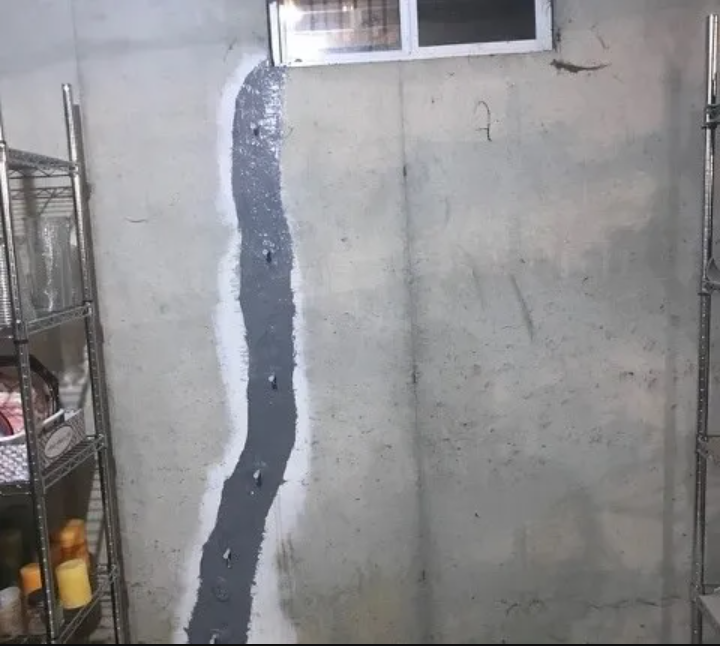
Steps To Repair Foundation Cracks
DIY Repairs for Minor Cracks
Not every crack in your foundation is a five-alarm fire. Some can be safely managed with basic tools and a little elbow grease. Here’s how to handle minor cracks without overcomplicating things:
- Clean the Crack: First things first, prep the area. Grab a wire brush or vacuum to remove dirt, debris, or loose material from the crack. A clean surface ensures whatever you’re using to seal the crack actually sticks.
- Seal with Epoxy or Polyurethane: For hairline or narrow vertical cracks, epoxy or a polyurethane sealant can do wonders. Grab an injection kit from your local hardware store, follow the instructions, and carefully fill the gap. The goal is to stop water from sneaking in and prevent the crack from widening.
- Apply Waterproofing: Once the sealant dries, follow it up with a waterproof caulk or sealant over the surface. This adds an extra layer of protection to keep moisture from working its way back through the crack. Low effort, high payoff.
Professional Services for Severe Cracks
When cracks are wide, horizontal, or growing faster than you’d like, it’s time to tap in the experts. Here’s what pros might do to fix the issue—and more importantly, why it matters:
- Assessment: A professional contractor or structural engineer will inspect your foundation, figure out what caused the crack, and offer a plan. This step matters because guesswork won’t cut it when it comes to the structural stability of your home.
- Underpinning: If the crack stems from a shifting or sinking foundation, you’re looking at a heavier solution like underpinning. This involves installing piers to stabilize and lift the foundation back to its original position. It’s not cheap, but the alternative—letting the problem spiral—is far worse.
- Hydraulic Cement: Bigger cracks often call for heavy-duty fixes. Hydraulic cement is a go-to because it expands as it sets, ensuring a tight, watertight seal even in large openings. This keeps both water and worries at bay.
- Wall Reinforcements: If the crack signals lateral pressure (we’re talking horizontal or stair-step cracks), reinforcements like steel braces or carbon fiber strips may be installed. These prevent your foundation walls from bowing or buckling further. It’s essentially armor for your house.
Ultimately, deciding whether to go DIY or hire professionals depends on the severity of the issue. Think of it like this: patching a minor crack yourself is like tying a loose shoelace, while calling a professional for major damage is like re-lacing the entire boot—both have their time and place, and knowing the difference is key.
Preventing Foundation Cracks
Stopping foundation cracks before they start is not rocket science—it’s a matter of smart, consistent maintenance. Here’s the deal: prevention is cheaper and easier than repair, and most of it boils down to controlling water and soil movement around your home.
- Improve Drainage: Make sure your gutters and downspouts are up to the task. If you see waterfalls spilling over gutter edges every time it rains, it’s time to clean them out. Extend your downspouts at least six feet away from your foundation. Bonus points for installing a rain barrel system to keep water runoff under control.
- Grade the Landscape: No one’s asking you to be a landscaping pro, but the ground around your house should slope away, not toward. A gentle grade—around six inches over the first ten feet—keeps water from pooling near the foundation. Got flat or low spots? Backfill with some topsoil and call it a day.
- Install Sump Pumps: If Winchester’s famously fluctuating water table likes to hang out in your basement, a sump pump isn’t optional—it’s mandatory. Invest in a good one, and consider a backup pump with a battery system for those surprise power outages during New England storms.
- Control Moisture Levels: Soil that’s too dry or too wet is bad news, plain and simple. In summer, avoid letting the soil shrink into desert cracks by watering plants and the perimeter of your home—but don’t turn the yard into a swamp. Aim for balance, consistency, goldilocks levels.
- Check for Tree Roots: Big trees with sprawling root systems sure look nice, but they’re foundation bullies. Keep heavy root spreaders like maples or oaks at least 20 feet away from the house. If you already have a tree throwing shade too close to home, consider root barriers to prevent further soil disruption.
Foundation crack prevention takes diligence but avoids headaches—and big repair bills—down the line. It’s not glamorous work, sure, but you’ll thank yourself later when your foundation is holding strong while your neighbor’s starts to crumble.
When To Call a Professional
Not every crack demands a call to the pros, but some signs are red flags you shouldn’t ignore. If you’ve got a crack exceeding ¼ inch in width, it’s time to stop guessing and get an expert involved. Larger cracks often hint at deeper structural issues that a DIY fix just won’t cover. Keep an eye on whether the crack is actively growing—marking the edges with a pencil or tape can help track it. If it’s on the move, don’t wait. Structural problems don’t resolve themselves; they escalate.
Another warning sign? Cracks paired with bowed walls, sloping floors, or doors that stick or won’t latch properly. These are classic signals that your foundation may be shifting, and ignoring them can lead to more expensive repairs down the line. Horizontal cracks, in particular, are serious business. They signal significant lateral pressure on your foundation walls, usually from soil that’s pushing in harder than your foundation can handle. For this, a pro’s intervention is non-negotiable.
Water complicates things further. If you’re noticing persistent dampness, pooled water, or—worst of all—mold near foundation cracks, you need expert help. Moisture issues don’t just impact your foundation; they create health risks and can damage your home’s interior. A qualified contractor will not only repair the crack but also address the root cause, like poor drainage or hydrostatic pressure, to keep the problem from coming back.
Bottom line: If the crack looks suspicious, behaves suspiciously, or brings friends (like water or wonky doors), call a professional. A small investment in an expert evaluation today can save you from massive headaches—and expenses—tomorrow.

Conclusion
Foundation cracks are not a “wait and see” kind of problem. In Winchester, MA, where shifting soils, freeze-thaw cycles, and aging homes are a common reality, these cracks demand attention and action. Ignoring them can snowball minor issues into major structural headaches—and costly ones at that. The good news? Early intervention is often straightforward and effective, whether through a simple DIY fix or the expertise of a professional contractor.
The key is to stay proactive. Monitor changes, address drainage issues, and don’t hesitate to seek professional help when needed. A small crack today doesn’t have to spell big trouble tomorrow—so long as you’re quick to act. Your home’s foundation is just that—a foundation. Protect it wisely, and it will protect your home for years to come.
Reviews from Happy Customers
Our top priority is customer satisfaction, and we work closely with clients to understand their unique needs and goals.




